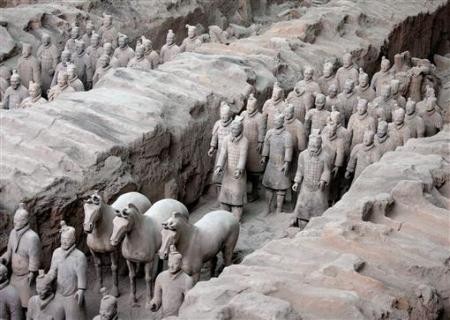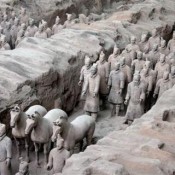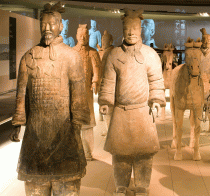Archaeologists at the Shaanxi Provincial Institute of Archaeology have found the remains of an ancient imperial palace near the tomb of Emperor Qin Shi Huang, (221 BC – 210 BC), the first emperor of China.
The palace is the largest complex discovered so far in the emperor’s sprawling 22 square-mile (56 square-km) second-century BC mausoleum. Archaeologists believe that this palace is a predecessor of the forbidden city, the imperial palace in Beijing , which was occupied by emperors during the later Ming and Qing dynasties. Both were built on north-south axes in keeping with traditional Chinese cosmology.
Despite wars and more than 2,000 years of exposure – the palace’s foundations are well preserved. Archaeologists have found walls, gates, stone roads, pottery sherds and some brickwork. Qin’s tomb is guarded by an estimated 6,000 life-sized terracotta warriors, including remarkably well-preserved cavalrymen, chariots and horses, each one unique. According to UNESCO, the terracotta army of the Qin Shi Huang Mausoleum must have represented the exact number of the imperial guards. The official website of the mausoleum states that about 6,000 statues of warriors and horses are still buried at the site. A recent excavation, in June, revealed a further 110 more terracotta statues
Qin began designing the palace for his afterlife shortly after he became king of the Qin state, aged 13. The complex took 700,000 workers about 40 years to build and was completed two years after his death. Chinese historians portray Qin as a great unifier, but as a ruthless leader.


